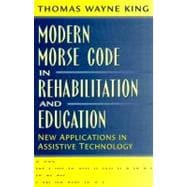
| Preface and Acknowledgments | xi | ||||
|
1 | (18) | |||
|
1 | (1) | |||
|
2 | (7) | |||
|
9 | (1) | |||
|
10 | (7) | |||
|
17 | (2) | |||
|
19 | (16) | |||
|
19 | (1) | |||
|
19 | (7) | |||
|
26 | (7) | |||
|
33 | (2) | |||
|
35 | (22) | |||
|
35 | (1) | |||
|
35 | (17) | |||
|
36 | (4) | |||
|
40 | (3) | |||
|
43 | (7) | |||
|
50 | (2) | |||
|
52 | (3) | |||
|
55 | (2) | |||
|
57 | (23) | |||
|
57 | (1) | |||
|
57 | (21) | |||
|
58 | (2) | |||
|
60 | (5) | |||
|
65 | (3) | |||
|
68 | (8) | |||
|
76 | (2) | |||
|
78 | (2) | |||
|
80 | (23) | |||
|
80 | (2) | |||
|
82 | (17) | |||
|
82 | (1) | |||
|
83 | (1) | |||
|
84 | (1) | |||
|
84 | (4) | |||
|
88 | (1) | |||
|
88 | (1) | |||
|
89 | (1) | |||
|
90 | (1) | |||
|
90 | (1) | |||
|
91 | (1) | |||
|
91 | (1) | |||
|
92 | (1) | |||
|
93 | (2) | |||
|
95 | (2) | |||
|
97 | (1) | |||
|
97 | (1) | |||
|
98 | (1) | |||
|
98 | (1) | |||
|
99 | (4) | |||
|
103 | (36) | |||
|
103 | (3) | |||
|
106 | (2) | |||
|
108 | (1) | |||
|
109 | (6) | |||
|
115 | (6) | |||
|
121 | (4) | |||
|
122 | (1) | |||
|
122 | (1) | |||
|
122 | (3) | |||
|
125 | (7) | |||
|
132 | (5) | |||
|
137 | (2) | |||
|
139 | (12) | |||
|
139 | (1) | |||
|
140 | (1) | |||
|
141 | (2) | |||
|
143 | (3) | |||
|
146 | (2) | |||
|
148 | (1) | |||
|
149 | (2) | |||
|
151 | (6) | |||
|
151 | (3) | |||
|
154 | (1) | |||
|
154 | (1) | |||
|
154 | (2) | |||
|
156 | (1) | |||
| Glossary | 157 | (6) | |||
| References and Bibliography | 163 | (30) | |||
| Appendix A: International Morse Code Character Set and Morse Codes for Other Languages | 193 | (3) | |||
| Appendix B: Timing of Morse Code Elements | 196 | (2) | |||
| Appendix C: Some Structures and Structures for Teaching and Learning Morse Code | 198 | (4) | |||
| Appendix D: Comparisons of Morse Code Characters and Extensions across Several Adapted-Access Communication Devices | 202 | (16) | |||
| Appendix E: Some Commercially Available Products for Teaching and Learning Morse Code | 218 | (5) | |||
| Appendix F: Morse Code Teaching Icons | 223 | (14) | |||
| Appendix G: Multimedia Morse Code Teaching Icons | 237 | (19) | |||
| Appendix H: Morsin' Around!... Rhymes, Rhythms, and Touch to Help You Learn Morse Code Quickly | 256 | (36) | |||
| Appendix I: Some Morse Code Adapted-Access and Emulation Programs and Devices | 292 | (3) | |||
| Appendix J: Additional Resources | 295 | (6) | |||
| Index | 301 |
The New copy of this book will include any supplemental materials advertised. Please check the title of the book to determine if it should include any access cards, study guides, lab manuals, CDs, etc.
The Used, Rental and eBook copies of this book are not guaranteed to include any supplemental materials. Typically, only the book itself is included. This is true even if the title states it includes any access cards, study guides, lab manuals, CDs, etc.